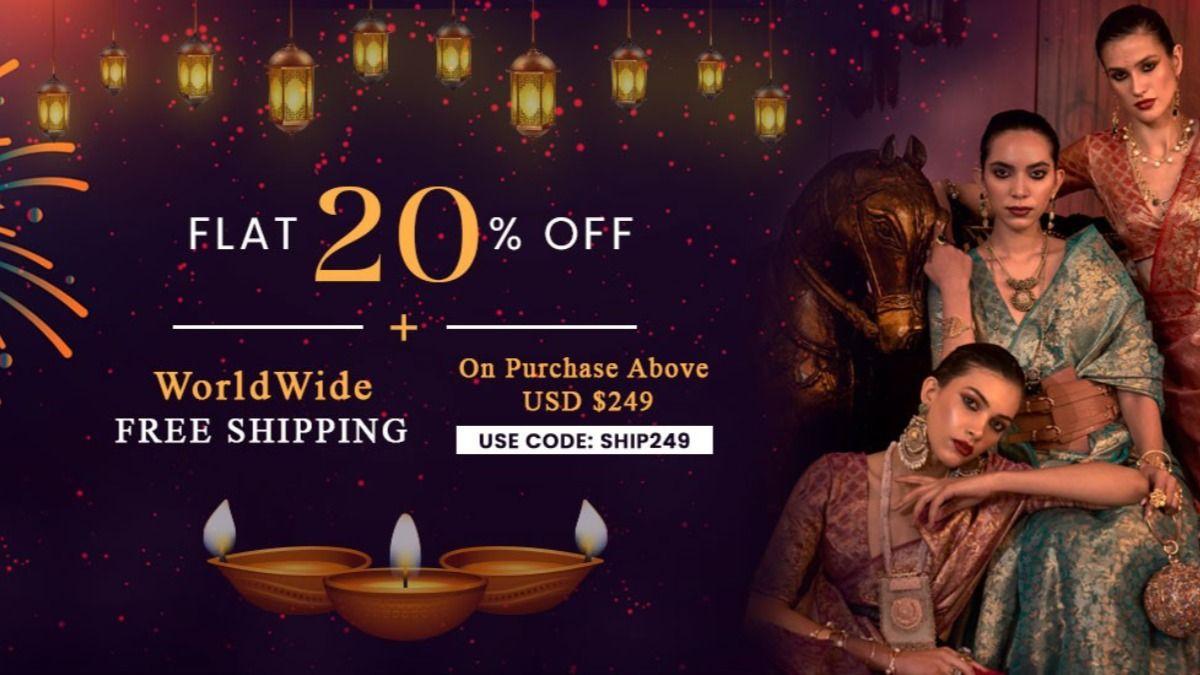The History of Indian Bridal Wear
If you've ever been to an Indian wedding, you know that the bride's attire is a sight to behold. From vibrant colors to intricate designs, Indian bridal wear reflects centuries-old traditions, cultural diversity, and evolving fashion trends. Let's delve into the fascinating journey of Indian bridal wear through the ages.
Ancient Traditions and Rituals
In ancient India, weddings were elaborate affairs steeped in tradition. Each ceremony, from the haldi to the mehendi and sangeet, had its own significance, reflected in the attire worn by the bride. The haldi ceremony saw the bride adorned in yellow attire symbolizing auspiciousness and purity, while the mehendi ceremony featured intricate mehendi designs on her hands and feet, complemented by vibrant attire. The sangeet ceremony showcased the bride in colorful, embroidered garments, reflecting joy and celebration.
Evolution of Indian Bridal Wear
Over the centuries, Indian bridal wear has evolved, influenced by various factors such as cultural exchanges, colonial rule, and contemporary fashion trends. The Mughal era introduced opulent fabrics, intricate embroideries, and draped silhouettes, which continue to inspire modern bridal fashion. The colonial era brought about fusion elements, blending Indian and Western styles, while the present-day sees a mix of traditional craftsmanship and global influences shaping bridal attire.
Regional Variations in Bridal Attire
India's diverse cultural landscape is reflected in its bridal wear, with each region boasting its own unique style. North Indian brides dazzle in richly embroidered lehengas and ornate jewelry, while South Indian brides opt for traditional silk sarees adorned with gold jewelry. East Indian brides exude elegance in handwoven sarees and temple jewelry, while West Indian brides embrace vibrant colors and mirror work embellishments.
Significance of Colors and Fabrics
Colors hold deep cultural significance in Indian weddings, with red symbolizing love and marriage in many regions, while other hues like green, yellow, and pink carry their own meanings. Fabrics like silk, brocade, and chiffon are favored for their luxurious textures and intricate weaves, adding to the allure of bridal attire.
Accessories and Jewelry
No Indian bridal ensemble is complete without exquisite jewelry, ranging from elaborate necklaces and earrings to intricate bangles and anklets. Traditional pieces like kundan, polki, and jadau jewelry are treasured heirlooms passed down through generations, while modern brides experiment with contemporary designs and statement pieces.
Influence of Bollywood
Bollywood has long been a trendsetter in Indian fashion, influencing bridal wear trends with its extravagant costumes and celebrity weddings. From iconic movie brides to real-life celebrity nuptials, Bollywood sets the stage for aspirational bridal fashion, driving demand for designer replicas and inspired creations.
Bridal Fashion Designers and Trends
India boasts a plethora of talented bridal fashion designers who blend traditional craftsmanship with contemporary aesthetics. From Sabyasachi Mukherjee's regal ensembles to Manish Malhotra's glamorous designs, these designers redefine Indian bridal couture with their innovative creations and trendsetting styles.
Sustainability in Bridal Wear
With growing awareness of environmental conservation, sustainable bridal wear options are gaining popularity among eco-conscious brides. From organic fabrics and natural dyes to upcycled textiles and zero-waste designs, sustainable bridal fashion offers a greener alternative without compromising on style or elegance.
Fusion Bridal Trends
In an era of cultural fusion and global connectivity, fusion bridal wear is on the rise, blending traditional elements with contemporary influences. Whether it's a fusion lehenga with a modern blouse or a saree paired with Western accessories, these eclectic ensembles reflect the bride's individuality and cosmopolitan flair.
Conclusion
The history of Indian bridal wear is a tapestry of tradition, innovation, and cultural diversity. From ancient rituals to modern trends, bridal attire continues to evolve, reflecting the rich heritage and vibrant spirit of India's wedding customs.
Visit Now - Sareeka
FAQs
-
Is red the only color worn by Indian brides?
- While red is traditionally associated with Indian bridal wear, brides today embrace a variety of colors based on personal preference and regional customs.
-
What are some popular bridal jewelry styles in India?
- Kundan, polki, and jadau are traditional jewelry styles favored by Indian brides, though modern designs incorporating diamonds and gemstones are also popular.
-
How has Bollywood influenced Indian bridal fashion?
- Bollywood movies and celebrity weddings often set trends in bridal wear, influencing everything from attire styles to jewelry designs and color choices.
-
Are sustainable bridal wear options widely available in India?
- Yes, there's a growing demand for sustainable bridal wear, leading to an increase in eco-friendly designers and brands offering environmentally conscious choices.
-
What factors contribute to the regional variations in Indian bridal attire?
- Factors such as climate, culture, and historical influences contribute to the diverse styles of bridal attire seen across different regions of India.





